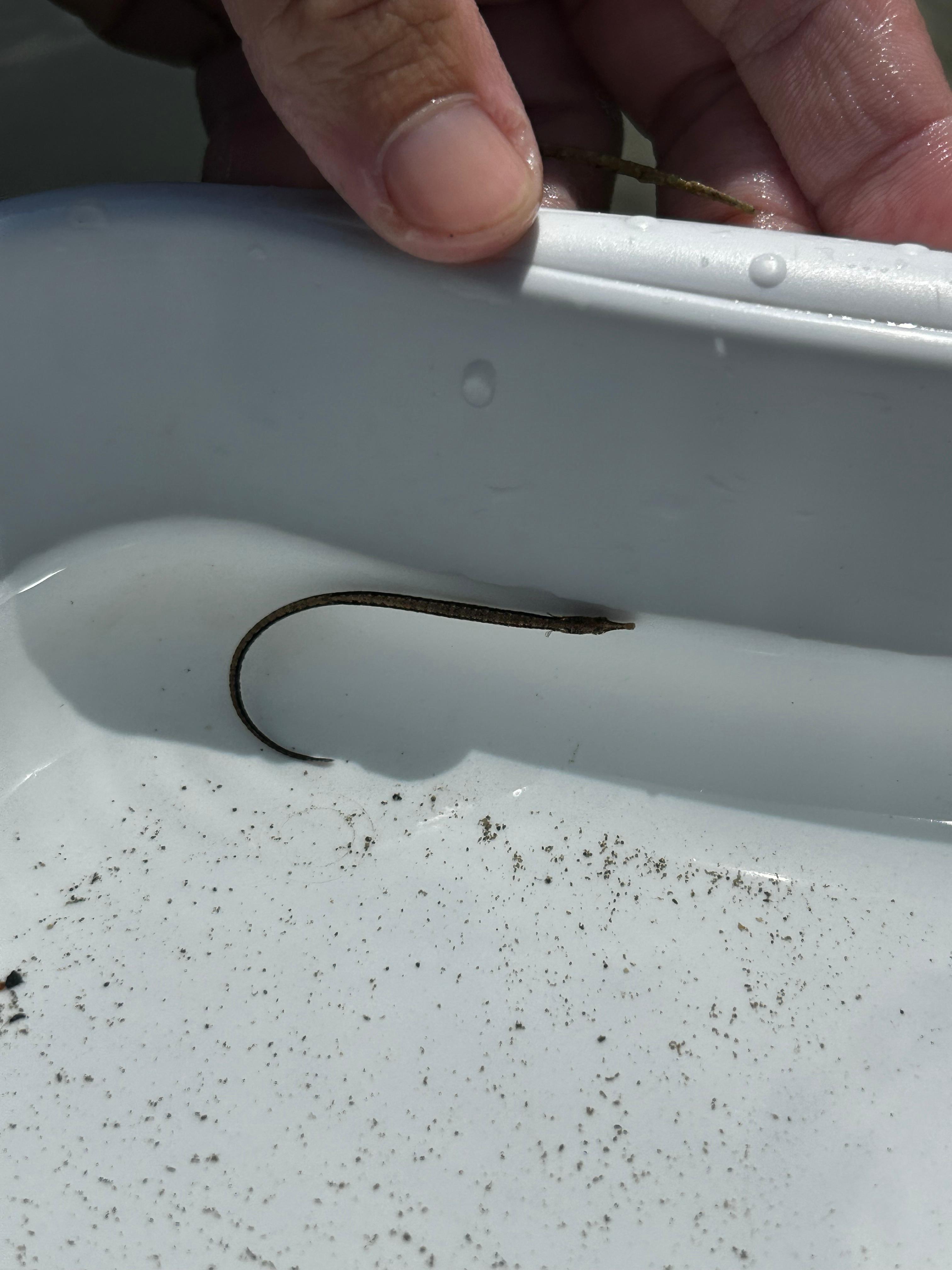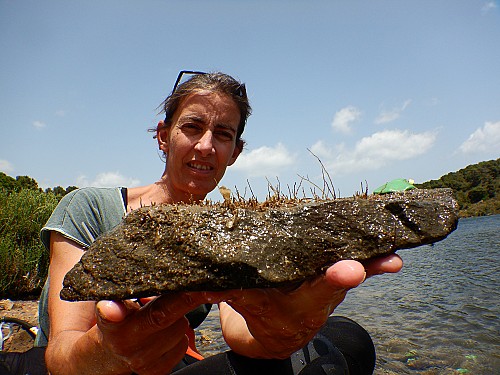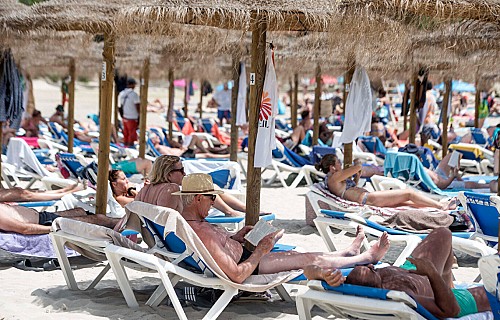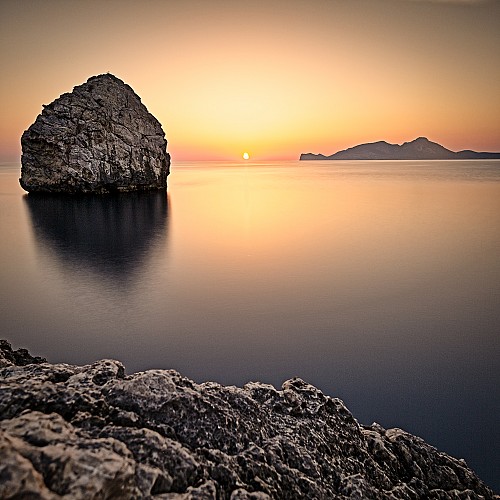Related project
Photo: Alba Piris.
The detection of this vulnerable species confirms the ecological importance and need to conserve the marine habitats of the port of Maó
This August, the scientific team of the Menorca shallow bays monitoring project observed two specimens of Black-striped pipefish (Syngnathus abaster) on the north coast of the port of Maó. This protected species is highly sensitive to environmental impacts, making its presence an indicator of the ecological importance that the port still retains.
The sighting was also recorded on the Observadores del Mar (Sea Watchers) platform and documented with images.
The Black-striped pipefish
The Black-striped pipefish is a small syngnathid fish, belonging to the seahorse family. Its body is covered with plates and it has a tubular face. It inhabits shallow areas with marine vegetation such as Zostera or Ruppia meadows. In the Balearic Islands, it is considered a vulnerable species, as it is particularly affected by the destruction and alteration of coastal habitats, pollution and water turbidity, and the disappearance of seagrass beds, which are its natural refuge. In Menorca, observations are scarce and little known, especially in the port of Maó, where population studies have not yet been established.
Project ‘Conservation and restoration of the shallow bays of Addaia, Fornells and the port of Maó’
The project for the conservation and restoration of shallow bays is the result of collaboration between the Menorcan Institute of Studies (IME), the Menorca Socio-Environmental Observatory (OBSAM), the Menorca Biosphere Reserve Agency (AMRB), the Menorca Preservation Foundation (MeP) and Marilles Foundation. Its objective is to ascertain the ecological status of the island's coastal ecosystems, to put them in value and propose management measures to improve their conservation status.
Findings such as these highlight the need to continue studying and preserving the natural values of Maó Bay, an environment that has been greatly impacted by human pressure but still maintains a biodiversity of special interest.
Shallow bays: A degraded area
The shallow bays of Menorca are home to a large number of unique habitats and species. Due to pressures such as poor water quality, the impact of shipping, and coastal urbanisation they have deteriorated considerably in recent decades. The surface area of marine plants such as Posidonia and Cymodocea, algae of great ecological value such as Cystoseira, and emblematic species such as seahorses have decreased significantly in these waters.
The 324-ha bay of Maó harbour is notable for its historical significance evoking a past marked by the port’s importance in the development of Menorca. This high level of human activity in the past and, to a greater extent, in the present, has made it a real challenge to define conservation and restoration measures. Maintaining the level of human activity and improving the conservation status of the remaining natural areas is a task for everyone.






